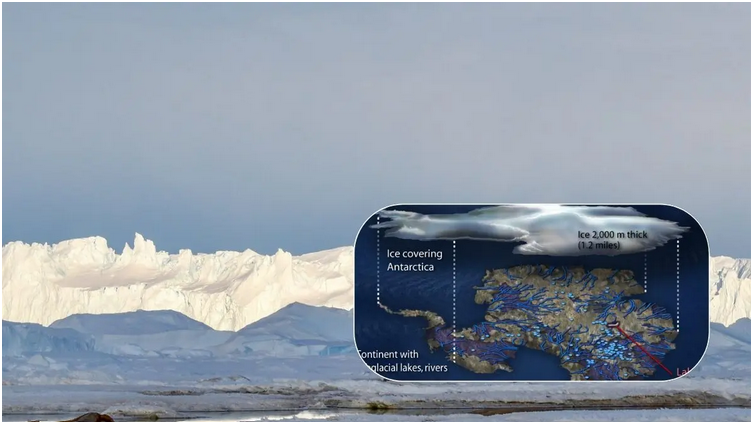Lake the size of PHILADELPHIA discovered under Antarctica contains sediments that could reveal what the continent looked like before it froze over, scientists claim
Scientists discovered Lake Snow Eagle using ice penetrating radar from the air
It's under the East Antarctic Ice Sheet – one of two large ice sheets in Antarctica
The lake is about 370 sq km in area, around the same as the city of Philadelphia
Scientists investigating the underside of the world's largest ice sheet in Antarctica have discovered a city-size lake.
The lake, called Lake Snow Eagle, lies in a mile-deep canyon in the highlands of Antarctica's Princess Elizabeth Land, a few hundred miles from the coast.
The lake's area is about 370 square km, or 142 square miles (30 miles long, 9 miles wide and 650 feet deep) – around the same as the city of Philadelphia.
It's under the East Antarctic Ice Sheet, which is one of two large ice sheets in Antarctica and the largest ice sheet on the entire planet.
According to the scientists, sediments in Lake Snow Eagle might contain a history of the East Antarctic Ice Sheet since its earliest beginnings.
The coast of Antarctica’s Princess Elizabeth, near where the ice sheet meets the sea. Newly discovered Lake Snow Eagle lies a few hundred miles inland, under the same ice sheet
They could reveal what Antarctica was like before it froze, how climate change has affected it and how the ice sheet might change as the world warms.
Lake Snow Eagle, which is covered by two miles of ice, was revealed by aircraft fitted with ice-penetrating radar, which sends out radio waves and times how long it takes for them to reflect back.
'This lake is likely to have a record of the entire history of the East Antarctic Ice Sheet, its initiation over 34 million years ago, as well as its growth and evolution across glacial cycles since then,' said study author Don Blankenship at the University of Texas at Austin.
'Our observations also suggest that the ice sheet changed significantly about 10,000 years ago, although we have no idea why.
Lakes Beneath Antarctic Ice: Deep Dark and MysteriousThe first sign that the lake existed was when scientists spotted a smooth depression on satellite images of the ice sheet.
To confirm it was there, they spent three years flying surveys over the site with ice penetrating radar and sensors that measure minute changes in Earth's gravity and magnetic field. Unlike ice, water reflects radar like a mirror.
'I literally jumped when I first saw that bright radar reflection,' said lead author Shuai Yan, also at the University of Texas at Austin.
WHAT IS AN ICE SHEET?.
An ice sheet is a mass of glacial land ice extending more than 20,000 square miles (50,000 square kilometers).
The two ice sheets on Earth today cover most of Greenland and Antarctica.
During the last ice age, ice sheets also covered much of North America and Scandinavia.
Together, the Antarctic and Greenland ice sheets contain more than 99 percent of the freshwater ice on Earth.
Source: National Snow and Ice Data Center
https://www.dailymail.co.uk/sciencetech/article-10797647/Scientists-uncover-city-size-LAKE-Antarctica.html



